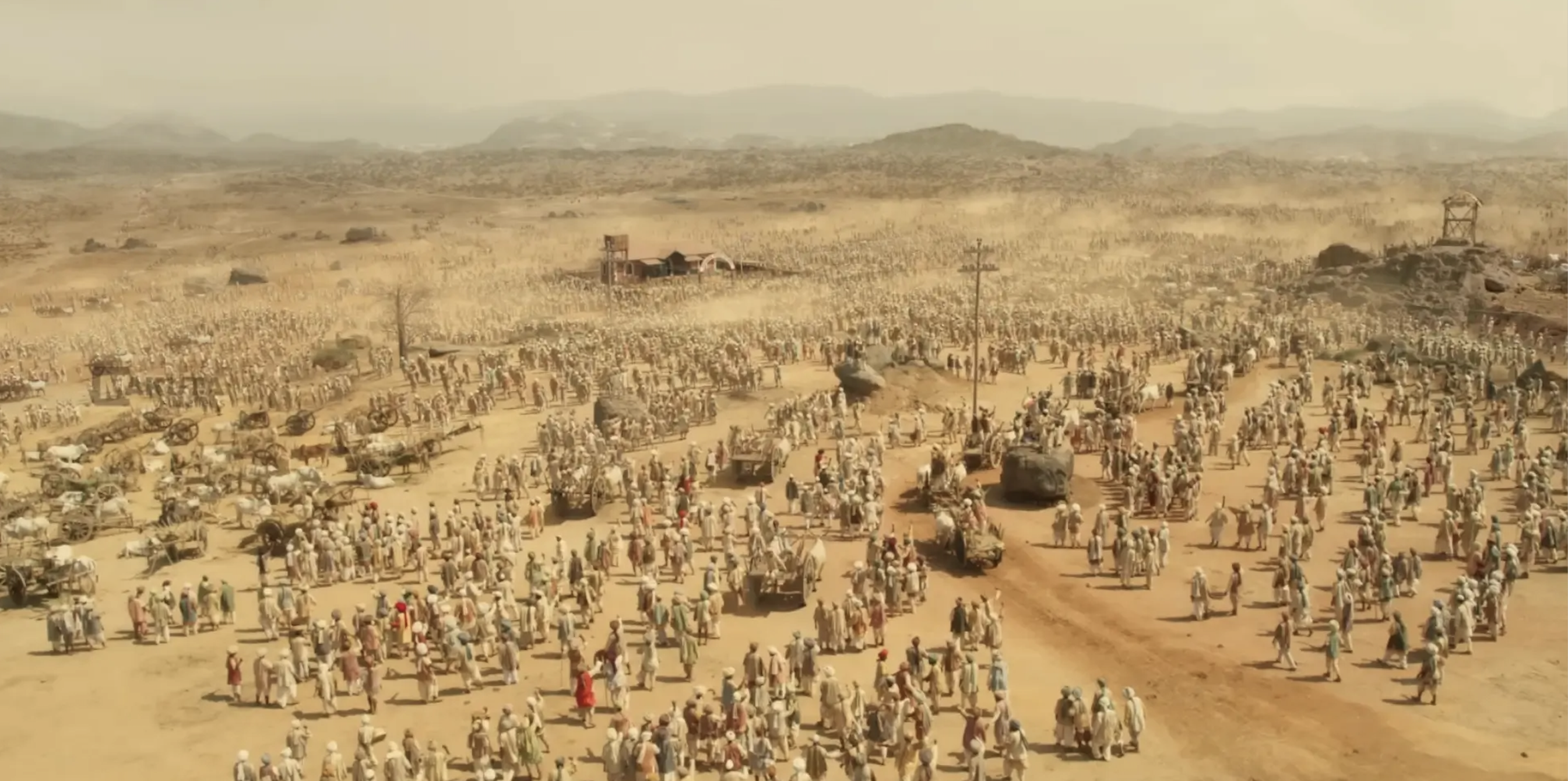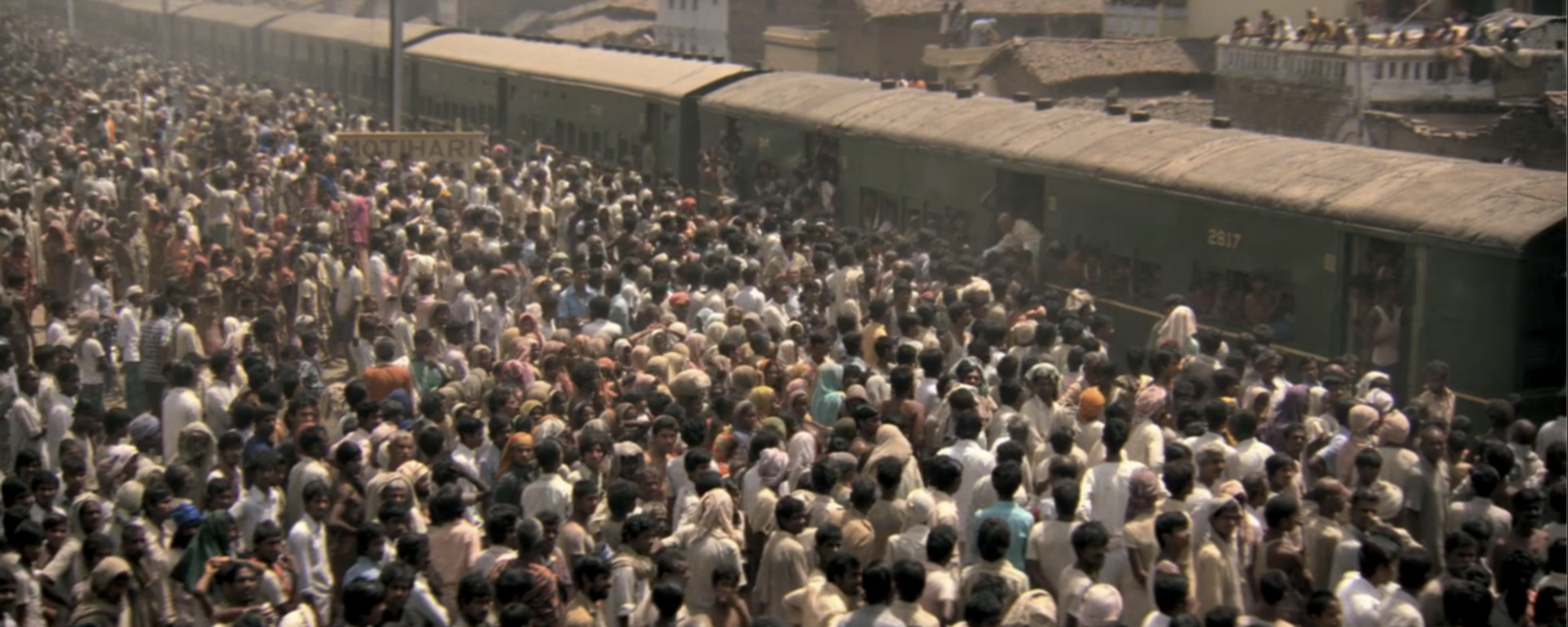Advances in visual effects (VFX) technology are producing spectacular imagery in Indian blockbusters. In Mani Ratnam’s Ponniyin Selvan in 2022, a 10th century kingdom comes back to life. In Om Raut’s 2023 film Adipurush, we witness the burning of mythical Lanka. In Siddharth Anand’s Pathaan last year, Shah Rukh Khan flies in and out of a canyon valley. These images are entirely computer-generated or artfully blend computer-generated imagery (CGI) with live-action photography. They are created using software applications during the “post-production” phase of a film by VFX artists working in studios often far removed in time and place from a film’s real locations and stars. But “post-production” is not quite enough to describe the central role this technology has assumed – a film’s VFX supervisors, like a film’s cinematographer or production designer, are now involved in conversations about the look and story of the film at its inception. Films are being imagined, scripted, shot and sold on the strength of such effects, which are every day transforming the physical processes of filmmaking.
The transformation, however, is much more widespread than a focus on spectacular imagery and special effects would suggest. VFX artists are also leaving their mark in almost every frame – from adjusting the color of light for continuity to modifying an image on a censor’s demand. Such effects are not all spectacular, nor do they necessarily call attention to themselves as special. One of the more profound developments in recent years has been the quiet replacement of physical performers who populate the frame with virtual performers. Critics, journalists, and scholars of Indian cinema should pay attention to this transformation. The substitution of human presence poses important questions not only for the essence of cinema as an art, but for the visual politics of cinematic representation and the political economy of film production.
Superstars fill the spotlight of Indian cinema’s blockbuster machine, but the cinema also needs bodies in the background against which these popular icons can pop on-screen. At the end of Sanjay Leela Bhansali’s 2018 film Padmavat, hundreds of women descend the steps to a ceremonial pyre for self-immolation as their fort is breached by invaders in medieval Rajasthan. Trailing their queen (Deepika Padukone), they create a fiery vision of mass suicide that is the film’s most indelible image, one which provoked heated debate upon the film’s release. But the creation of this sequence was no less heated. Filming took place over several days during a hot summer in Mumbai’s Film City. To generate fire and smoke, real and virtual elements were combined. The blazing pyre was digital, but smaller flames dotting the frame were created on set by setting fire to rubber tires. Those burning tires evaporated into clouds of black smoke that filled the frame, while the tires themselves were carefully concealed. But assembling the women proved difficult; the film’s director, Bhansali, is alleged to have complained about the 350 extras or “junior artists” hired for this scene: “The shooting of the scene went on for a week, and the junior artists got restless. They would meander off in groups in between shoots and doze off due to exhaustion.” Their exhaustion may be explained by the relentless heat of the city and the infamous exactitude of the film’s director, as well as the particularly noxious effects of those burning rubber tires. Black smoke may photograph uniquely well, but those same fumes rapidly induce nausea, dizziness and depletion. As overheated extras struggled to cope with the physically draining effects of the shoot – and perform an obedient choreography of collective resolve – Bhansali described the shoot as a “challenge more emotional than physical.” To guard against the emotional and expensive challenges errant extras can mount to a film’s completion, filmmakers may be turning to an altogether different source from which to cast their anonymous crowds.
S.S. Rajamouli’s 2022 film RRR opens on a hot day on the outskirts of Delhi in 1920s India. Hundreds of angry young men have gathered around a colonial police station to protest the arrest of Lala Lajpat Rai in Calcutta. The mob will soon be dispersed by an imperial officer (Ram Charan), whose muscularity sets in motion a revisionist fantasy: armed violence, the film tells us, could have cut short colonial rule decades earlier than the transfer of power eventually took place. This historical fantasy finds its visual expression in the displacement of the people – icons of collective non-violent non-cooperation – from the centre of the film’s visual world to make place for strong superheroes. Indeed, the people are mere mirage: many of those we see gathering around the police station are not paid extras but digital “agents” generated by crowd simulation software. Similarly large crowds today are extended with digital agents created, costumed and animated as armoured soldiers flanking a swordfight (Ponniyin Selvan) or gun-slinging commandos watching a helicopter land (Jawaan). All of these films were made during or after the onset of the COVID-19 pandemic, which triggered safety protocols across India’s film industries – crowd simulation solved the problem of physical proximity for the pandemic era (and allow cinematic persons to persist in a “post-human” mode). But such “solutions” may remain in place long after the pandemic ends its rampage, accelerating older shifts in how films are made, with stark consequences for those who have long participated in their production.

Still from RRR (S.S. Rajamouli, 2022)
Compare, for instance, how crowds were convened for another nationalist epic, Gandhi, by Richard Attenborough in 1982. Using crowd casting suppliers, translators and megaphones, hundreds of thousands of real people were contracted to recreate the rising political consciousness of decolonial struggle. The film’s production in India was controversial, but as a co-producing partner, the National Film Development Corporation sought to allay anxieties by settling on a deal: revenues from the film’s run in India would be used to launch a new welfare fund to support film workers, among whose largest representative associations were those for extras or junior artists. The deal was the product of intense political struggle. Through the 1980s, film workers organised and struck repeatedly as they fought for better terms from film producers and for recognition from the government. Negotiations were incredibly fine-grained. What an extra would be paid depended on if they spoke more than five words or fewer, whether they waded into water above their knee or below it, and whether their faces appeared prominently in the camera or not. The relative muteness or stillness of background players, even their facelessness, then, are financial calculations with aesthetic consequences. I cover this terrain of political struggle more extensively in my recently published book, Seeing Things published by University of California Press this year, which examines the production of horror films in 1980s Bombay. Some of the same struggle is registered in Gandhi. If you pause it just right, you will see extras looking directly at the camera instead of away from it and toward their messianic leader (played by the half-white Ben Kingsley). It is an act of disobedience that injects something like lived reality into cinematic fiction, an unscripted insurgency that could only arise from live performers. But the problems posed by the materiality of live performers – by their capacity for exhaustion or infection, their demand for better dues or call to strike – are being quietly scrubbed by VFX artists.

Still from Gandhi (Richard Attenborough, 1982)
VFX artists now supply the appearance of extras onscreen, rather than extras themselves. Many of these artists are employed at Indian VFX studios, among them Makuta VFX (Hyderabad), Red Chillies VFX (Mumbai) or VFXWalla (Hyderabad). In Hyderabad, their offices are clustered in the same upscale neighborhoods that house the local offices of global corporations, rather than closer to the film’s traditional filmmaking neighborhoods – a reminder of the original orientation of India’s VFX industries. These studios emerged at first to supply “outsourced” digital labour for Hollywood studios, which have relied on digital visual effects to a greater extent for a longer period of time. Indeed, crowd simulation software first revolutionised Hollywood filmmaking at the turn of the century, evident in such films as Gladiator by Ridley Scott in 2000 and The Lord of the Rings by Peter Jackson the following year. Since then, India’s contribution to global VFX output has grown. It is estimated that 20% of the world’s VFX work is executed in India. This should unsettle our idea of what counts as an Indian film, but also about the kind of exploitative labour unleashed by advances in technology. VFX work is symptomatic of the neoliberal recalibration of labour. These are workers outside unions, working across time zones, and competing with workers in other countries for a slice of the VFX pie. A high-pressure environment in which artists flame out quickly and studios declare bankruptcy, VFX artists may be little more than “coolies, working in air-conditioned, white-collar sweatshops.” By generating mass redundancies for the junior artists who have for decades supplied the human supplement to the superstars in the foreground and focus, VFX artists are unwittingly defanging the background or junior artists’ union in favor of using digital extras in their films’ backgrounds. Instead, VFX workers might learn something from their struggles.
Kartik Nair is an Assistant Professor of Film and Media Arts at Temple University. He is the author of Seeing Things (University of California Press, 2024).
This article first appeared in India in Transition, a publication of the Center for the Advanced Study of India, University of Pennsylvania.
